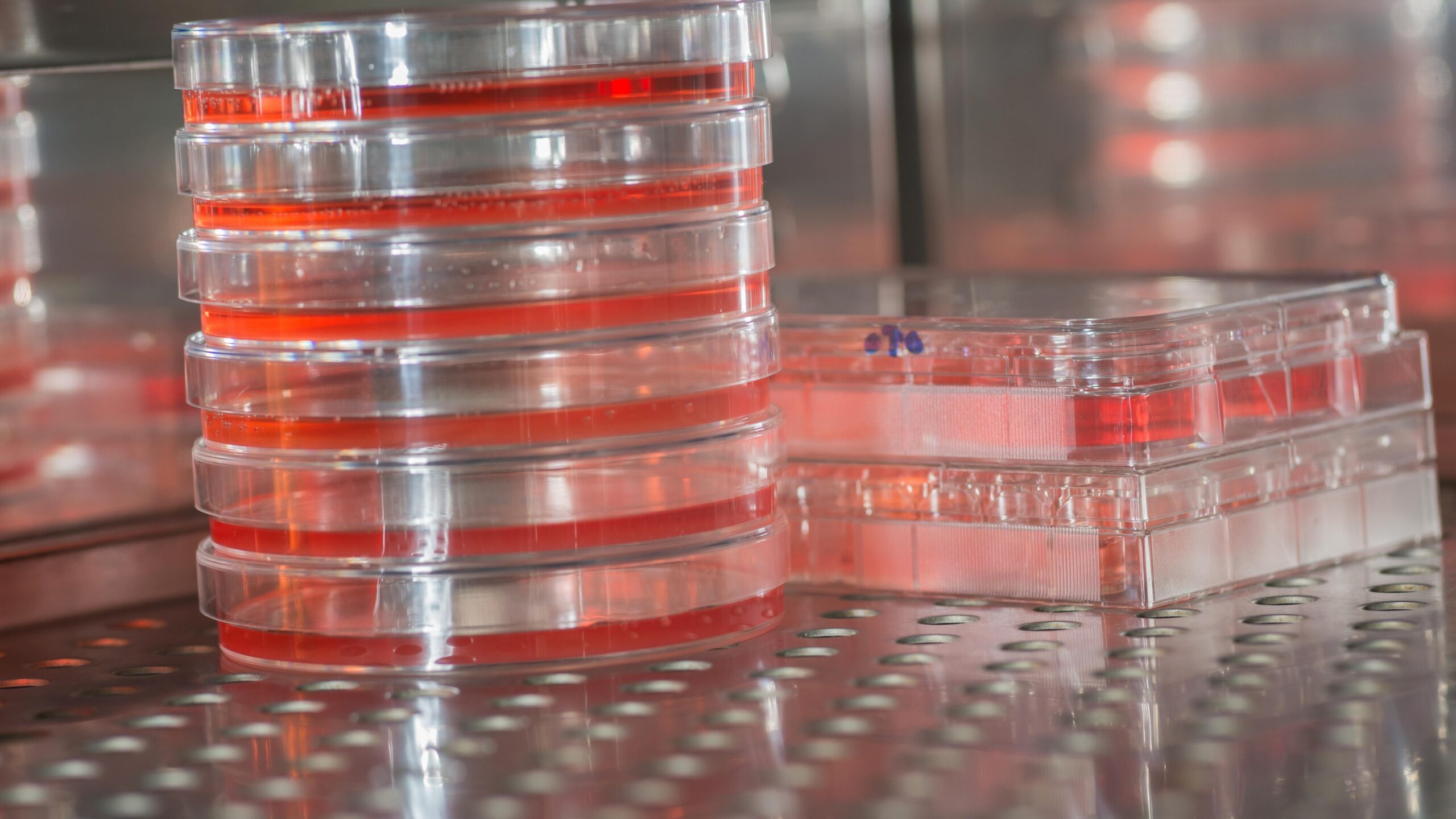
Cell Culture in Research Lab
Cell culture stands as a cornerstone technique in modern biological research, medicine, and biotechnology. By growing cells outside their natural environment, typically in a controlled laboratory setting, scientists can study cellular behavior, test new drugs, and explore disease mechanisms. This versatile technique plays a pivotal role in a wide array of applications, including drug development, genetic research, vaccine production, and much more making it indispensable to advancing scientific knowledge and healthcare innovations.
In this blog, we’ll explore what cell culture is, how it works, the various types of cultures, and its importance in science and medicine.
What is Cell Culture?
Cell culture refers to the process of growing cells in a controlled environment, typically outside their natural habitat. Cells can be sourced from living tissues or organisms and are then placed in culture dishes where they are provided with the optimal conditions needed for survival and growth. To support their proliferation, the cells are supplied with a nutrient-rich medium that contains essential vitamins, minerals, amino acids, and other growth factors. These cells are incubated at a specific temperature (usually around 37°C for mammalian cells) and pH levels, closely mimicking the conditions found inside the human or animal body to promote healthy growth and function.
Different Types of Cell Cultures
Cell culture techniques can be classified into several types based on the source of the cells and the specific goals of the research. Each type of culture has unique characteristics and applications, making them essential tools for advancing scientific knowledge across multiple disciplines.
1. Primary Cell Cultures
Primary cell cultures are directly isolated from living tissues, preserving many of the characteristics of the original tissue. These cells are often preferred when studying cellular behaviors that closely reflect their natural state. However, primary cells have a limited lifespan and can only divide a certain number of times before they lose their ability to proliferate.
Examples:
- Human fibroblasts (from skin tissue)
- Hepatocytes (liver cells)
- Endothelial cells (lining blood vessels)
2. Immortalized Cell Lines
Immortalized cell lines are genetically modified to grow indefinitely, bypassing the normal growth limits of primary cells. This allows them to proliferate for long periods, making them a reliable resource for a wide range of laboratory experiments. The process of immortalization typically involves introducing viruses (such as the Epstein-Barr virus) or applying chemical agents to alter the cells’ genetic material.
Examples:
- HeLa cells (derived from cervical cancer, one of the widely used cell lines in research)
- HEK-293 cells (human kidney cells, frequently used in gene expression and protein production studies)
- CHO cells (Chinese hamster ovary cells, widely used in biotechnology for recombinant protein production)
3. Stem Cell Cultures
Stem cells are unique because they have the remarkable ability to differentiate into various specialized cell types, offering vast potential in regenerative medicine, developmental biology, and tissue modeling. There are two main types of stem cells commonly used in culture:
- Embryonic Stem Cells (ESCs): Pluripotent cells capable of differentiating into any cell type in the body, making them valuable for studying early development and creating diverse tissue types.
- Induced Pluripotent Stem Cells (iPSCs): Adult cells that have been reprogrammed to a pluripotent state, allowing them to function like embryonic stem cells. iPSCs are especially important for personalized medicine, disease modeling, and regenerative therapies.
4. Co-Culture Systems
Co-culture systems involve growing two or more different cell types together in the same culture dish. These systems are incredibly valuable for studying cell-to-cell interactions, such as how different cell types communicate or collaborate within tissues. Co-cultures can be used to model complex biological systems or investigate how cells interact under various conditions, such as in disease progression.
Example:
- Cancer-immune cell co-cultures: Studying how tumor cells evade immune surveillance by co-culturing cancer cells with immune cells.
Why Is Cell Culture Important?
Cell culture is a critical technique that underpins countless scientific discoveries and innovations. Its versatility makes it indispensable across a wide range of disciplines, from pharmaceutical development to regenerative medicine. Let’s take a closer look at some of the most impactful applications of cell culture and how it advances science and healthcare.
1. Drug Development and Testing
Cell culture is central to the pharmaceutical industry, where it plays a vital role in testing the safety and efficacy of new drugs. By growing cells in the lab and exposing them to potential drug candidates, researchers can observe the cells’ responses—such as changes in cell growth, gene expression, or signs of toxicity. This allows scientists to screen drugs before they move on to animal or human trials.
Example:
- Cancer drug testing: Researchers observe how cultured tumor cells respond to different treatments, helping to identify promising new therapies for cancer.
2. Vaccine Production
Cell cultures are crucial in the production of many vaccines. Viruses are often grown in cultured cells, which allows them to replicate in a controlled environment. Once the virus has been cultured, it can be harvested, weakened, or inactivated to produce vaccines. This method has been fundamental in the development of vaccines for diseases like polio and, more recently, for mRNA-based vaccines like those used for COVID-19.
Example:
- Culturing flu viruses in eggs or cell lines to produce vaccines each flu season.
3. Cancer Research
Cell culture is a powerful tool for cancer research. By culturing cancer cells, scientists can investigate the molecular mechanisms that drive cancer growth, metastasis, and drug resistance. Researchers also use cultured cancer cells to test the effects of chemotherapy drugs and explore potential biomarkers for early cancer detection.
Example:
- Using HeLa cells (from cervical cancer) to explore cancer cell division and identify new therapeutic targets for cancer treatment.
4. Tissue Engineering and Regenerative Medicine
Stem cell culture holds transformative potential in the field of regenerative medicine. By cultivating stem cells and guiding their differentiation into specialized cell types, scientists are working to create lab-grown tissues and even organs that could be used for transplantation. This cutting-edge research offers promising solutions for treating a wide range of conditions, including heart failure, neurodegenerative diseases, and spinal cord injuries, bringing us closer to innovative therapies that could revolutionize how we approach healing and recovery.
Example:
- Culturing heart muscle cells to create cardiac tissue for drug testing or to repair heart damage in patients.
5. Personalized Medicine
Advances in cell culture are helping pave the way for personalized medicine, where treatments can be tailored to the specific needs of individual patients. By culturing cells derived from a patient’s own body (such as tumor cells), researchers can test different treatments to determine which is most effective for that person’s condition. This approach ensures that therapies are both effective and minimize side effects.
Example:
- Culturing patient-specific cancer cells to test how they respond to various chemotherapy drugs, ensuring the most effective treatment for the individual.
Challenges and Limitations of Cell Culture
While cell culture has revolutionized research and medicine, there are several challenges and limitations that researchers must navigate:
- Contamination: Cultured cells are highly sensitive to contamination by bacteria, fungi, or viruses. Maintaining a sterile environment and following strict aseptic techniques are essential to prevent contamination and ensure the integrity of experiments.
- Differences in Cell Behavior: Cells grown in culture don’t always behave exactly as they would in a living organism. The artificial environment in which they grow may not fully replicate the complex conditions they would experience in the body, which can sometimes limit the relevance of findings.
- Ethical Concerns: The use of human-derived cells, especially stem cells, raises ethical questions. Issues such as the sourcing of fetal tissue, as well as the use of animal models in research, remain topics of debate within the scientific community.
Conclusion
Cell culture is an invaluable technique that allows scientists to study cells in a controlled, reproducible environment. From accelerating drug discovery and producing vaccines to advancing cancer research and tissue engineering, the applications of cell culture are vast and ever-expanding. As technology continues to evolve, we can expect even more sophisticated cell culture techniques, offering new possibilities for understanding human biology, developing personalized treatments, and ultimately improving human health.





